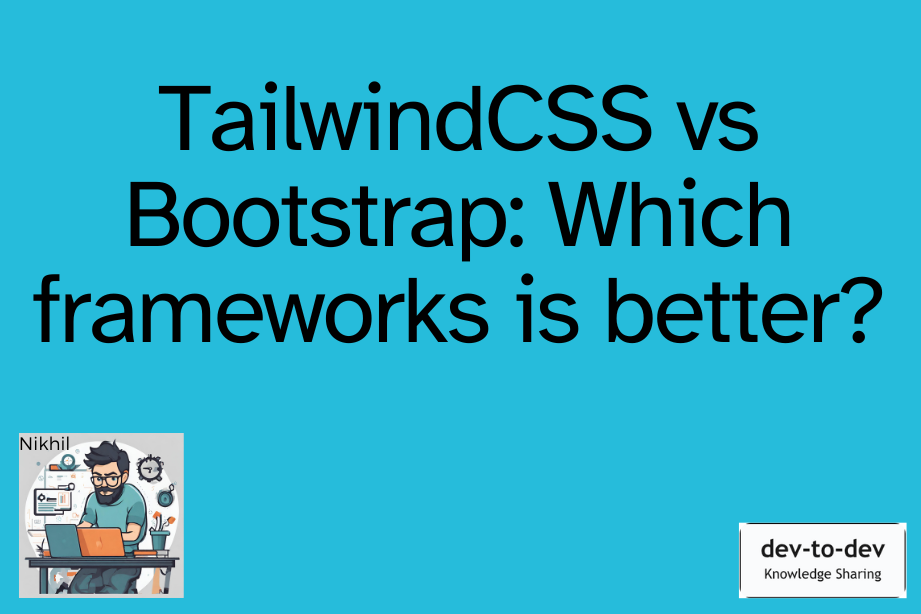Tailwind CSS and Bootstrap are both popular CSS frameworks that provide pre-designed CSS classes to help developers create custom designs quickly. However, there are some key differences between the two frameworks.
TailwindCSS vs Bootstrap key differences
| Key points | TailwindCSS | Bootstrap |
| Design philosophy | Tailwind CSS, on the other hand, is a utility-first framework that provides low-level utility classes that can be combined to create custom designs. | Bootstrap is a component-based framework, meaning it provides pre-designed components that can be used to create custom designs. |
| Customizability | Tailwind CSS is highly customizable, allowing you to configure various aspects of the framework, such as colors, font sizes, and spacing. | Bootstrap is also customizable, but to a lesser extent. |
| Size | Tailwind CSS is smaller in size compared to Bootstrap. This is because Tailwind CSS provides only low-level utility classes. | Bootstrap provides a larger number of pre-designed components. |
| Learning curve | Tailwind CSS has a steeper learning curve compared to Bootstrap due to its utility-first approach. Developers need to learn a new set of utility classes and how to combine them to create custom designs. | Bootstrap, on the other hand, is easier to learn due to its component-based approach. |
| Responsiveness | Frameworks provide responsive utility classes that can be used to create responsive designs. Tailwind CSS provides a more fine-grained control over responsive behavior compared to Bootstrap. | Frameworks provide responsive utility classes that can be used to create responsive designs. |
| Design aesthetics | Tailwind CSS provides a minimal and customizable design aesthetic.Tailwind CSS allows developers to create unique designs that are not constrained by a specific visual style. | Bootstrap has a distinct and recognizable design style. Bootstrap has a more consistent look and feel across its components. |
| CSS output | Tailwind CSS generates more CSS output compared to Bootstrap. This is because Tailwind CSS provides a large number of low-level utility classes that can be combined to create custom designs. | Bootstrap provides pre-designed components that may be more limited in terms of customization. |
| Customization vs. convenience | Tailwind CSS prioritizes customization over convenience. Tailwind CSS requires more effort to create a custom design, but provides greater flexibility and control. | Bootstrap prioritizes convenience over customization. Bootstrap provides pre-designed components that can be easily added to a project, but may require more effort to customize. |
| Developer experience | Tailwind CSS provides a more streamlined developer experience compared to Bootstrap. Developers using Tailwind CSS can focus on writing HTML markup and using utility classes to style their content. | Bootstrap requires more interaction with the framework’s JavaScript and CSS components. |
| Community support | Comparatively lower community compared to Bootstrap. | Bootstrap has a larger and more established community. This means that there are more resources and plugins available for Bootstrap compared to Tailwind CSS. |
Conclusion
In summary, the choice between Tailwind CSS and Bootstrap depends on the specific needs of your project. Tailwind CSS is a better choice if you need more customization and fine-grained control over design, while Bootstrap is a better choice if you need pre-designed components and an easier learning curve.

